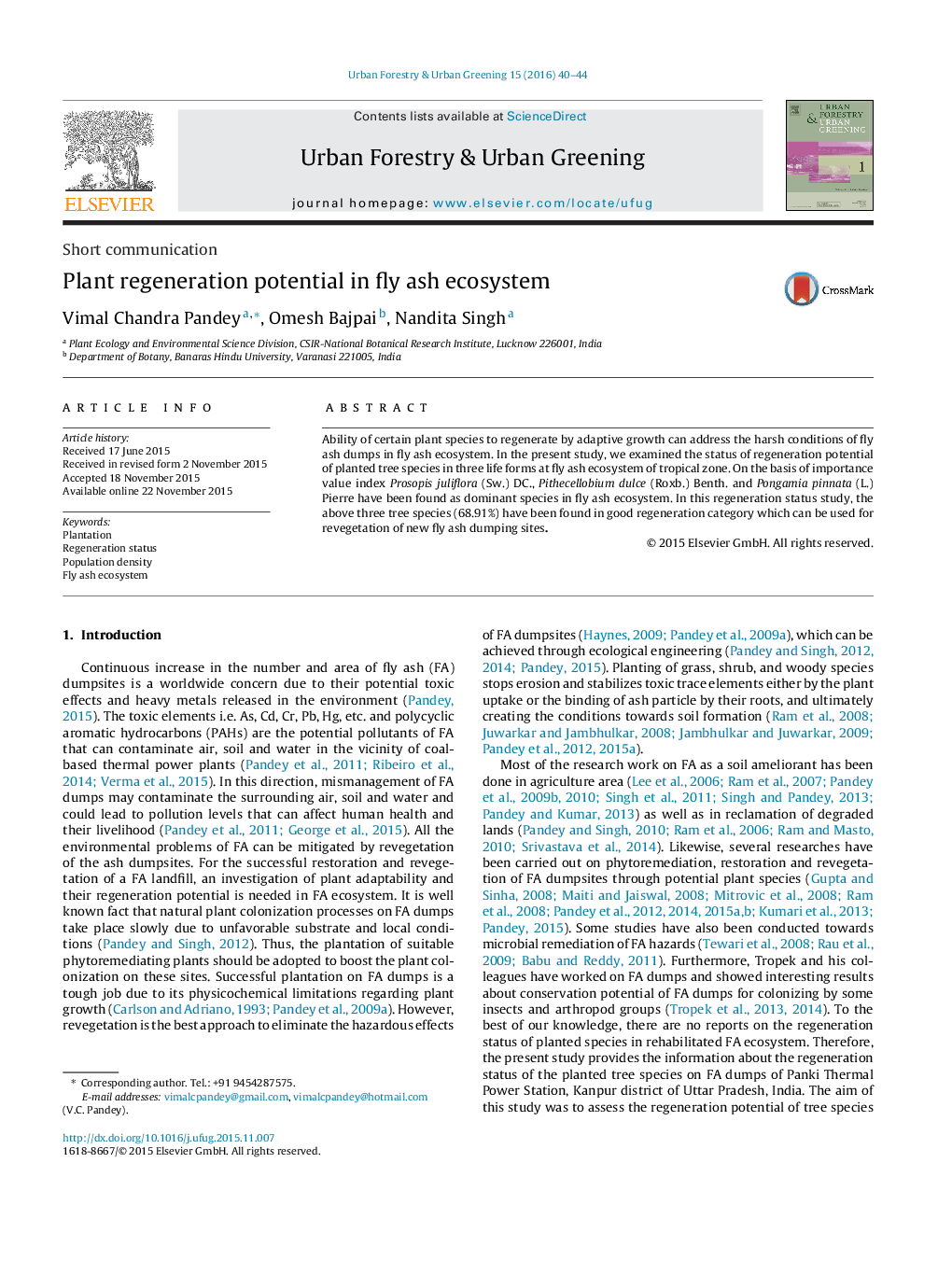| Article ID | Journal | Published Year | Pages | File Type |
|---|---|---|---|---|
| 93965 | Urban Forestry & Urban Greening | 2016 | 5 Pages |
•Continuous increase in the fly ash dumpsites is a worldwide concern.•Regeneration pattern of the planted species in fly ash ecosystem was assessed.•Identifying potential tree species for revegetation of abandoned fly ash dumps.•Regeneration potential of dominant plant is an indication of their adaptation to fly ash.
Ability of certain plant species to regenerate by adaptive growth can address the harsh conditions of fly ash dumps in fly ash ecosystem. In the present study, we examined the status of regeneration potential of planted tree species in three life forms at fly ash ecosystem of tropical zone. On the basis of importance value index Prosopis juliflora (Sw.) DC., Pithecellobium dulce (Roxb.) Benth. and Pongamia pinnata (L.) Pierre have been found as dominant species in fly ash ecosystem. In this regeneration status study, the above three tree species (68.91%) have been found in good regeneration category which can be used for revegetation of new fly ash dumping sites.
Graphical abstractFly ash ecosystem that developed as a mixed forest dominated with Prosopis juliflora through manmade plantation on abandoned fly ash dumps to mitigate dust and toxic elements pollution from the nearby surroundings of Panki Thermal Power Station. Photographs by V.C. Pandey.Figure optionsDownload full-size imageDownload as PowerPoint slide
